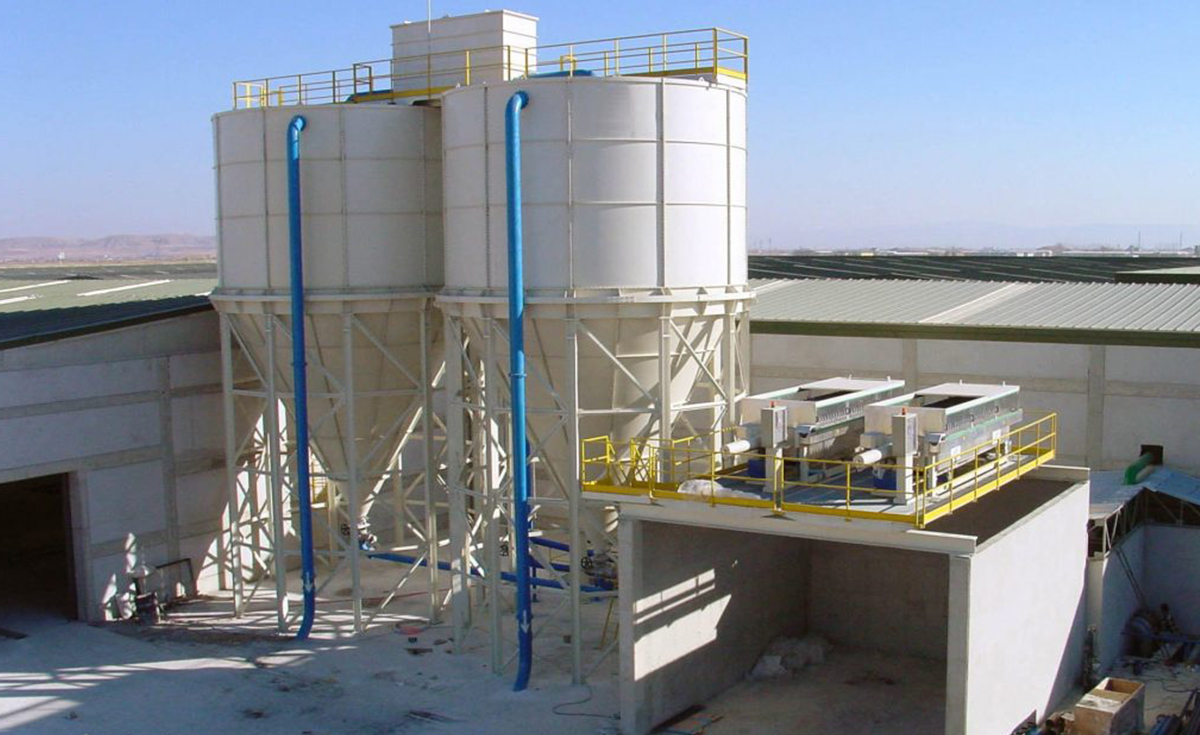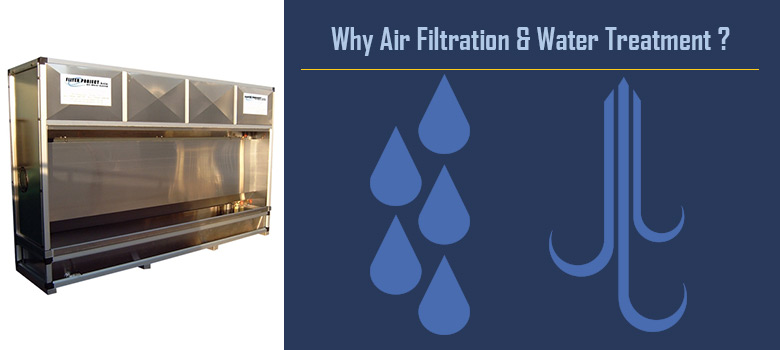Why Air Filtration and Water Treatment is Important
When it comes to stone fabrication, a number of important considerations come to mind. These occur when thinking about equipment, operations, and safety. Air filtration and water treatment is related to all three of those topics. In this article we look at why air filtration and water treatment is important to fabricators. We’ll also briefly discuss some of the ways stone professionals are dealing with air and water in their work shops.
Environmental safety regulations make it necessary for professionals to give attention to not only air quality, but also water cleanliness. This is one reason fabrication professionals consider air and water treatment to be an important part of business.
Air Quality Regulations
More and more necessity is placed on professionals as air quality regulations continue being defined and refined. Additionally, how a shop contributes to a safe work environment for its workers along with safety is growing in importance. These standards for air quality and safety moves many fabrication pros to implement solutions. Thus they protect the work environment from potentially dangerous particles in the air.
Although fabricators use various methods when it comes to keeping air quality high, each method has shops implementing it. So, the focus is not so much on which technique a professional uses. Rather, it is geared toward the results achieved. Either way however, there is equipment designed to help fabricators keep the air as clean as necessary for the workers breathing it. One method used by stone professionals that work in dry environments is dust collection. As with anything else, there are multiple methods for collecting dust in the shop. Let’s look at how this relates to why air filtration and water treatment is important.
Dust Collection Methods

This method of air filtration consists of drawing dust from the work environment using suction. Dry dust cabins are one kind of machine using this technique. These units draw the air into the machine; passing the air current through an array of filters. The air current carries the dust from the work area into the filters. The filtered air blows back into the work environment for re-circulation. Many shops use dry fabrication areas. Yet, another series of air filtration systems utilizes a slightly different filtering method; water.

Like the dry dust collection cabins just mentioned, wet dust collectors use suction. However, they use water as the filter. The wet dust collection system – sometimes referred to as water walls – work along the same lines, these dust collectors also draw an air current carrying dust form the work environment into the machine. The difference is that wet dust collectors have a continuous stream of water pouring down a flat surface. as the dust gets pulled into the machine, the running water catches the dust and carries it down the wall into a catch basin. the dust settles to the bottom while the water is pumped back up to the top of the machine where it flows back down the wall to catch another round of unwanted dust particles.
What Matters Most in Dust Collection
Whichever kind of dust collection method you choose, a primary factor in the machine’s effectiveness is where you locate it. The location of the dust collector plays a big role in how well it removes dust. for example if the collection unit is placed far from the source of the dust, the air current created by the machine is not as strong. Additionally, the dust must travel further before it gets to the filter; potentially by breathed in by workers as it travels. So if you decide to use a dust collector as an air filtration method, be sure it is placed in an acceptable proximity to the work table. To continue our examination of why air filtration and water treatment is important, let’s consider the second aspect of the discussion; water treatment.
Wet Fabrication Methods
Another option that you might have used in the past or are considering using is a wet fabrication process. This method creates a wet environment that leaves little dust, if any at all, in the air. Yet, the wet environment brings with it another important consideration; water filtration solutions.
Fabricators realize definite benefits using a wet cutting and polishing environment. One advantage, is that the process naturally keeps the amount of dust down. This means though, you will need to consider how to filter the water than traps the stone dust. Furthermore, how will you manage the water flow? Will you have a completely closed system, or will the process allow for some runoff that is filtered to the proper degree? These are among the questions that you will need to answer if you are thinking of using a wet fabrication environment.
Fabricating natural and engineered stone in a wet environment yields some benefits as well. For example, using a closed system provides a potential reduction of water usage. This, in turn, reduces utility costs. How much of a savings can be realized? Well it depends on how much water is normally used by a given fabrication shop. However, the savings can be significant.
System Types Used by Professionals

The stone fabrication industry provides the following important types of systems:
- Dust Collection Systems
- Sludge Dehydrators
- Filter Press Plants
- Slurry Silo Systems
- Settlement Systems
- Water Treatment Plants
As we have seen in this post, professionals create safer fabrication environments in a number of ways. Yet safety is not the only reason why air filtration and water treatment is important in the stone fabrication industry. Business owners reduce permitting fees with a water treatment or clarification plant. Additiona and you can boost your business by tapping into a market that prefers to do business with companies that are helping the environment.


One thought on “Filtration Importance”
Comments are closed.